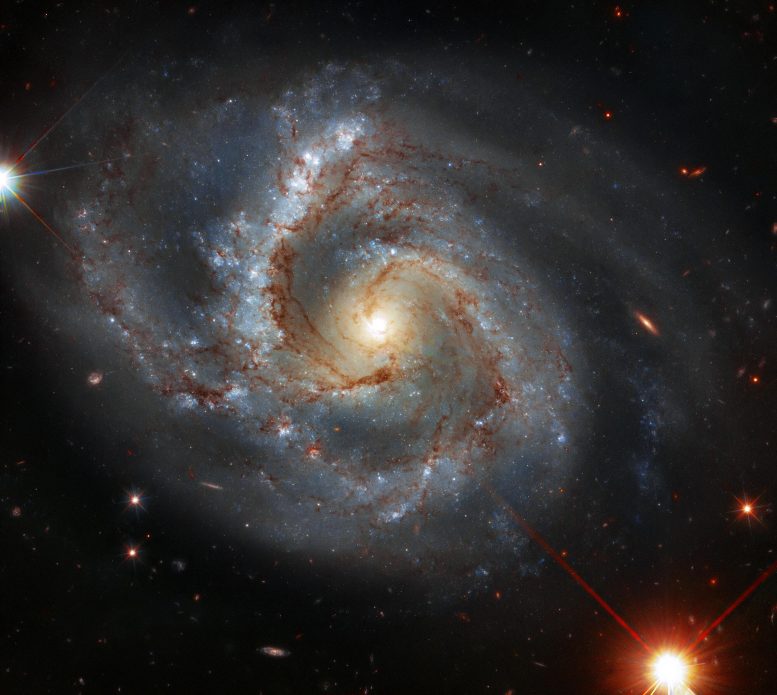
This week’s Hubble/ESA Picture of the Week features NGC 7678 — a galaxy located approximately 164 million light-years away in the constellation of Pegasus (The Winged Horse). With a diameter of around 115,000 light-years, this bright spiral galaxy is a similar size to our own galaxy (the Milky Way), and was discovered in 1784 by the German-British astronomer William Herschel.
The Atlas of Peculiar Galaxies is a catalog that was produced in 1966 by the American astronomer Halton Arp. NGC 7678 is among the 338 galaxies presented in this catalog, which organizes peculiar galaxies according to their unusual features. Cataloged here as Arp 28, this galaxy is listed together with six others in the group “spiral galaxies with one heavy arm.”
5 Comments
The dark clouds of dust seem directional as well. The heavy arm has a clear view ahead and dust behind. On over to the other side of the galaxy and the dust is on the leading edge or has been stirred into the mix.
Did the galaxy run into an intergalactic blob of dust or is this some ancient merger leftover.
The James Webb telescope is sure going to be busy answering questions like this for many years.
I don’t believe this is a heavy arm at all..but rather that the galaxy is aligned at an angle. As the first commentator said, the “heavy arm” is much clearer without dust, while the receding arm is obscured across its body, suggesting a portion of the galactic bulge is interfering. If a galaxy is relatively close-by, you can have a foreshortening effect, I would gather the further you move away the more diminished the effect; however, this doesn’t mean there couldn’t be some asymmetry involved but I don’t think it could be as dramatic an effect as this picture suggests. When we consider the process. Cold gas moving thru the galactic nucleus inward eventually causing the central region to cast out highly energetic jets, which warm the surrounding gas and it slowly cools and forms stars as its moving back to the galactic nuclei.
https://upload.wikimedia.org/wikipedia/commons/thumb/6/64/VST_snaps_a_very_detailed_view_of_the_Triangulum_Galaxy.jpg/1200px-VST_snaps_a_very_detailed_view_of_the_Triangulum_Galaxy.jpg
This is essentially the same effect at 2M light years where the one in the article NGC 7678 is around 167M light years. I think it simply becomes more distorted over more massive distances and it makes it harder to discern..like a Gaussian blur. But from my observations of galaxies unless there is a major disruptive force they generally remain fairly symmetric in terms of inflow and out flow. Much like a hurricane except space is much more isotropic and smooth then earths dynamic geo thermal environment. If there was a disruption large enough to create one arm with substantially more mass then the other, there would be a reciprocal reaction that would be symmetrical and most likely just as noticeable because of certain laws of motion. I don’t believe the arm in the foreground has any more significant mass then the one in the background.
If I had to guess I would bet it has a pretty massive galactic nuclei or supermassive blackhole. What a cool picture!!
A beautiful spiral Galaxy , really looking forward to the more powerful telescopes so we can see more clearly farther away . It’s not surprising that a spiral galaxy would be that way considering how fast everything seems to be moving , even our Milkyway has ran into and absorbed smaller galaxies over the years.